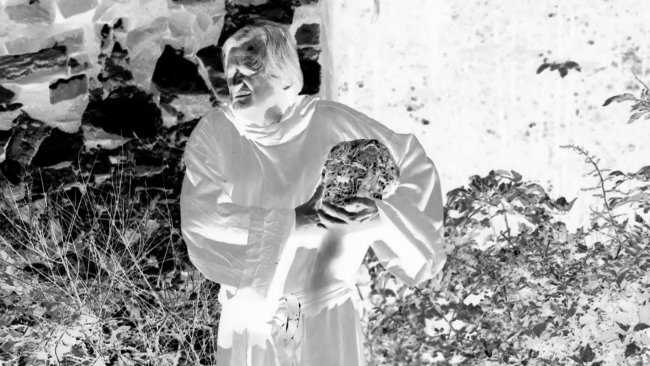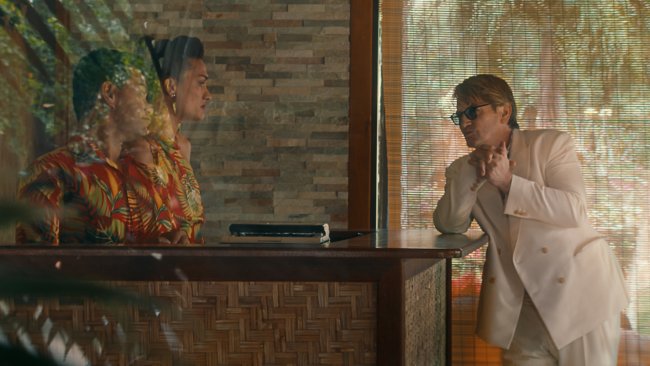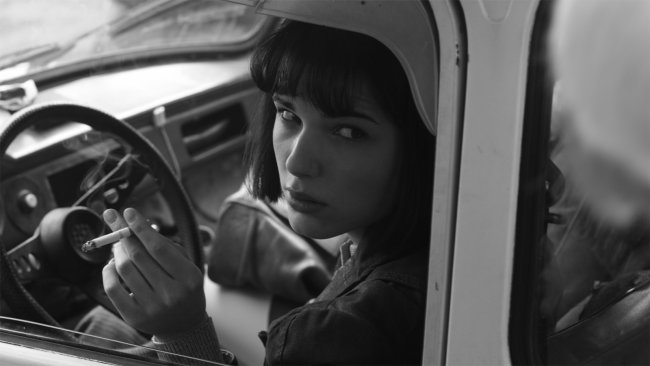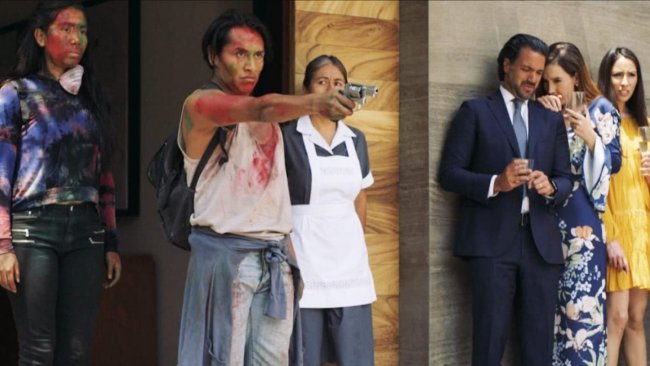Milla
[…] While the story allows Massadian some opportunity to investigate character arcs in the tumult experienced by this young woman and her stoic reserve to “get on with it”, the power and poetry of the film is found in the compositional structure of the frames.
[…] Massadian’s photographic involvement with time, space, figure, object, architecture and landscape permits an ontology of frame that allows the viewer alternate discoveries with a unique energy.
[…] The observational quality (reminiscent of the first half of the film) gives unadulterated space to the whatever takes place, permitting us the gravity of sadness and the promise of a happy future to legitimate writing these events.
Text: Jodie McNeilly
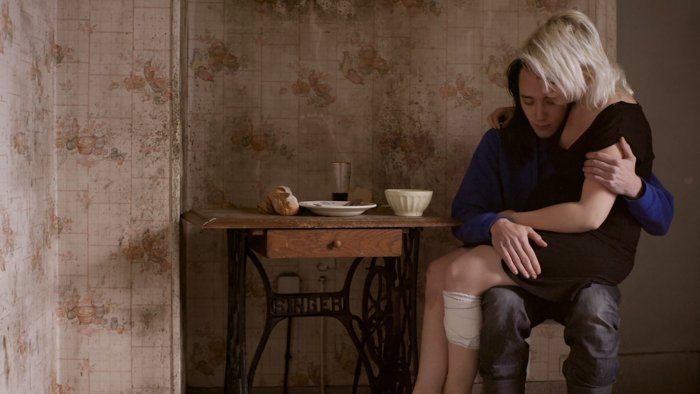
The first 50 minutes of the film Milla are largely an observation of two teens squatting in an empty dwelling in a small fishing town in the North of France. Milla and Léo are playful and carefree as they set-up house, a place far from where they have come from. We are never sure why, or what these two penniless teens have run away from. But they are buoyed by a joyfulness that is sealed by complicit giggles and innocent physical affection. It is a great relief that director Valérie Massadian is able to take us on this journey without explicit sexual scenes. In fact, their relation is so ambiguous that at first it is not clear whether they are siblings, as each gently cajoles the other in long takes that witness off-centre childish antics. Their love relation only becomes apparent as Milla’s belly begins to swell along with Léo’s tenderness.
Anti-societal, anti-establishment motivations are hinted at in Léo’s punkish behaviour and pointed sardonic remarks against the middle-class and educated. But the notion of a radical and romantic ideologue who will, when the going gets tough, return to a comfortable life does not fit his profile. As the film progresses the story becomes less nauseatingly idealistic, subverting our initial impressions of the two.
Léo gets a job sorting fish on a large trawler carrying men and noisy machines. These are beguiling scenes expressing the monotony of labour and scale of industry involved for one little fish to land on a restaurant plate. The screen fills with tiny silver bodies flickering like metallic confetti caught unwillingly then dumped by giant nets – their destinies ordained. In a monologue directly addressed to the audience, Léo trembles too without air, and speaks of his fragility. All men, including himself, are «burdened with weight in their feet». This is why society «doesn’t work». He wants to float like Milla, to float with her laughter. Milla is now understood to be the instigator, rather than naïve follower in their freedom adventures. He wants the lightness, ballasted by a strength that only she possesses. A courage that we see emphasised as traumatic events begin to slowly catheterise her bubble and leak all the happiness out: pregnancy, Léo’s death and loneliness.
While the story allows Massadian some opportunity to investigate character arcs in the tumult experienced by this young woman and her stoic reserve to “get on with it”, the power and poetry of the film is found in the compositional structure of the frames. This is made possible because the essence of still photography emphatically informs the moving image. We are left to explore colour, light, movement, object composition, facial expressions, and micro-actions less as scenes constructing a whole, but more as carefully crafted vignettes that enable thoughts and feelings not necessarily connected to the storyline. Even while most scenes look improvised and involve a lot of task-based performance (the hoovering scenes in the hotel holding us hostage to an “exhaustive” style of performance) Massadian’s visual arrangement, the duration of shots, choreography of bodies and objects in relation to the placement of these locked off frames evidence a thoroughly thought through “set-up” coupled with the impulse of shooting in the moment.
In film, the frame finds its limit in the editing choices. Editing forces the viewer into a very different relation with the image making their experience more susceptible to a manipulation immersing them strictly in the narrative, or intended film aesthetic. Massadian’s photographic involvement with time, space, figure, object, architecture and landscape permits an ontology of frame that allows the viewer alternate discoveries with a unique energy.
In one scene, the sun is only just waking. It bathes the kitchen of their squatted abode in an unusual kind of light, a diluted sepia—the kind of light that many of us never see or have the time to appreciate. There is a slight breeze that beckons winter; it is a cold Atlantic one that gently moves the broken glass shutters open and closed with an intermittent whistling that conjures a myriad of images and memories to transcend the immediacy of story. The duration of the shot allows one to breathe and contemplate within a different atmosphere. There are several more moments like these that punctuate the film.
One possible issue with such an approach is that the two cataclysmic events occurring against a background of difficult social conditions, a death and a birth, are not only marginalised in the overall unfolding of the plot but lack the detail that helps us understand or feel a continuity. One could ask, why bother with these two events if the film focuses more on isolated portraiture than straightforward storytelling for provoking pathos and evoking emotions? But Massadian rightly makes something of these events without the necessary drama. We are hit with enough depth of feeling despite the facts or expected ontologies of frame.
The final quarter of the film relies on a documentary video style (in the vein of Australian video artist Kate Murphy) that shows Milla and her now 3-year old son Ethan performing their day to day lives in the absence of a father. The observational quality (reminiscent of the first half of the film) gives unadulterated space to the whatever takes place, permitting us the gravity of sadness and the promise of a happy future to legitimate writing these events.
Even though Milla is a challenge to watch, it demands our perseverance for all the right reasons. Its images truly linger with the full spectrum of the senses.
This article contains a third-party video. If you would like to watch the video, please adjust your settings.
Info
Milla | Film | Valérie Massadian | FR-PT 2017 | 128’ | Locarno Festival 2017, Cinéma Spoutnik Genève
Special Jury Prize Ciné+ at Locarno Festival 2017
First published: May 21, 2018
